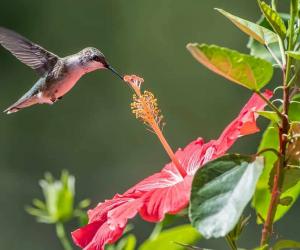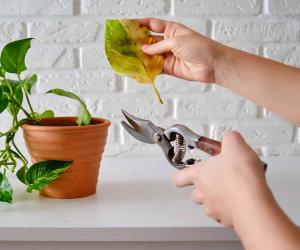Akita Progression: Growth Chart, Milestones, and Training Tips
Considering getting an Akita? These adorable balls of fluff make great pets and affectionate additions to your family. Here’s what you need to know about getting an Akita puppy, what to expect when it comes to their growth, and helpful tips to train them. With the right care, these dogs will be special members of your family for years.
Akita Summary
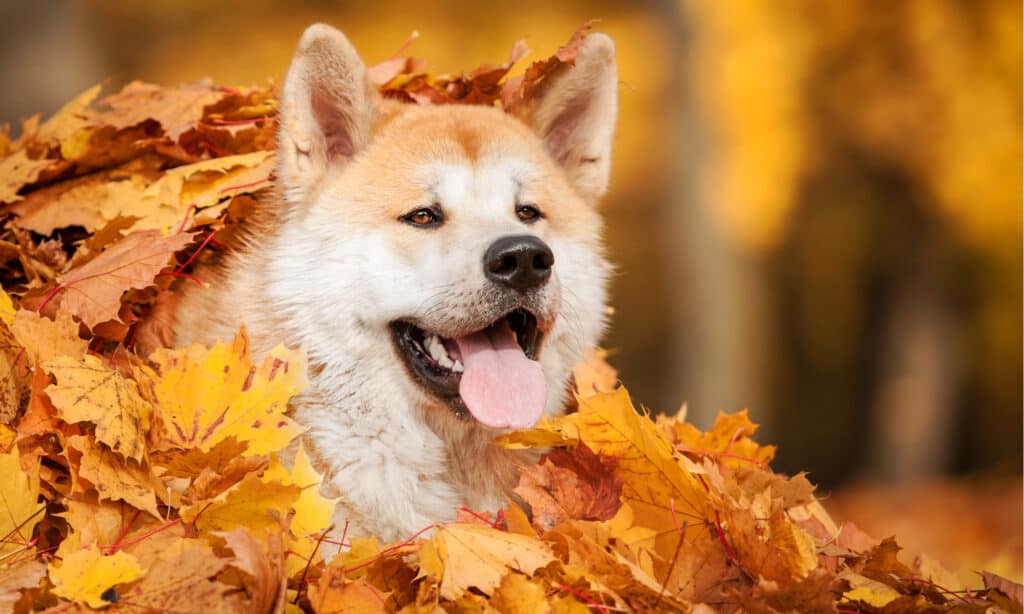
©Rita_Kochmarjova/Shutterstock.com
These large dogs are reliable protectors, especially of their families. They were bred to be guard dogs and hunting dogs for the Japanese royal family. At one point, they hunted bears in northern Japan, specifically the Akita prefecture. This is where their name came from. They are spitz dogs, which means that they have pointed ears and snouts. Akita have the characteristic curled tail that falls forward over their body.
Akita Growth and Weight Chart by Age
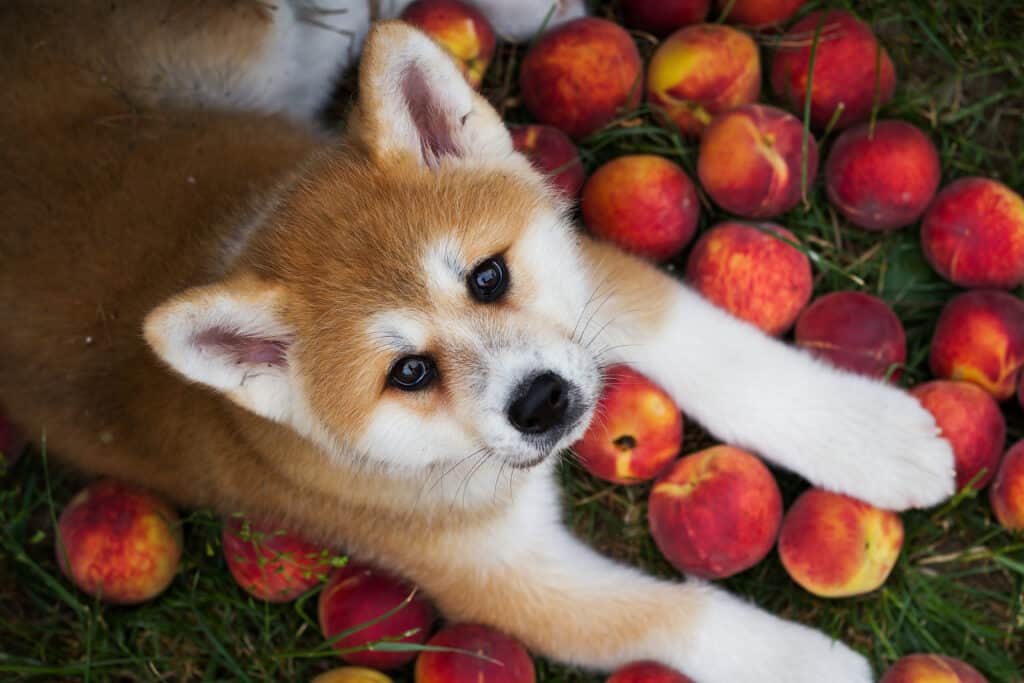
©Eve Photography/Shutterstock.com
Japanese Akita and American Akita are similar in size and disposition. Their coat color can vary but in general, these two types of Akita as the same when it comes to care and personality. Some organizations consider them different breeds while others keep them together. Males often weigh more and are stockier than females. By the time they are fully grown, male Akitas can be up to 30 or 40 pounds heavier than their female counterparts.
| Age | Male Weight (in pounds) | Female Weight (in pounds) |
| Birth | 7- 12 | 5 – 10 |
| 1 month | 7 – 12 | 5 – 10 |
| 6 weeks | 14 – 23 | 10 – 20 |
| 2 months | 17 – 27 | 15 – 25 |
| 3 months | 30 – 40 | 30 – 40 |
| 4 months | 35 – 50 | 35- -40 |
| 5 months | 45 – 60 | 45 – 55 |
| 6 months | 55 – 70 | 50 – 65 |
| 7 months | 60 – 80 | 55 – 75 |
| 8 months | 65 – 85 | 60 – 80 |
| 9 months | 75 – 95 | 65 -85 |
| 10 months | 90 – 110 | 65 – 85 |
| 11 months | 95 – 115 | 65 – 90 |
| 12 months | 95 – 125 | 70 – 95 |
| 2 years | 100 – 130 | 70 – 100 |
When Will My Akita Stop Growing?
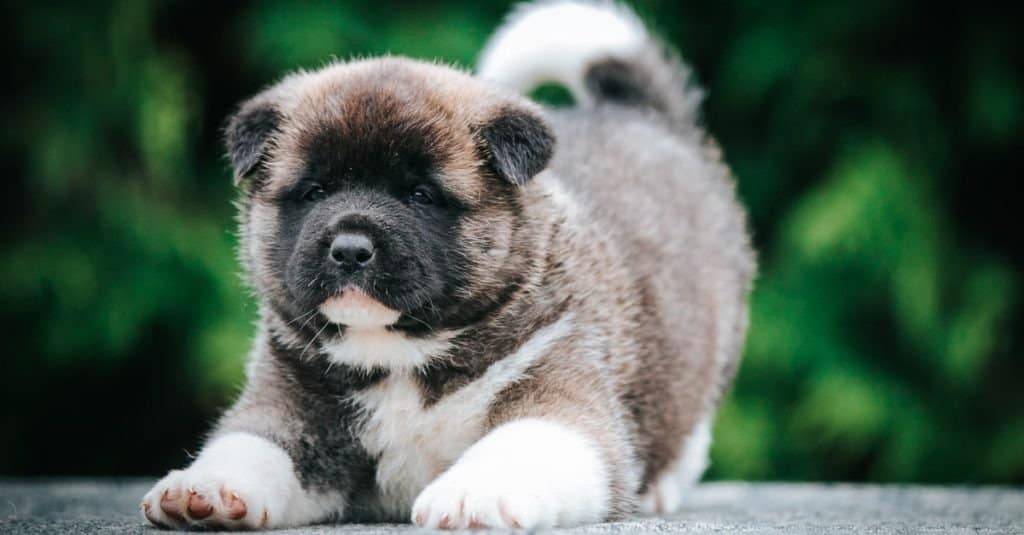
©Eve Photography/Shutterstock.com
Most Akita stop growing in length and height around 10 or 11 months old. This is true for both male and female dogs. Akitas typically reach around 2 feet in height. They take longer to reach their adult weight, however. Akitas continue to put on muscle even after they reach their adult size. They are a particularly muscular and stocky breed. Much of the bulk that they put on to become full-grown adults occurs between 1 and 2 years old. By the time they are 2 years old, most Akitas have reached their adult size and weight.
Males generally outpace females early on when it comes to weight. They often gain more weight even within the first couple of months of life and are noticeably larger than female Akitas. This can vary by individual, however. Like many other breeds, an Akita’s paws as a puppy can be a good indication of their future size. Larger paws that are not proportional to the rest of their bodies are typical for any puppy. But the larger the paws, the larger the puppy will likely grow to be as an adult.
How Big Will My Akita Be When It’s Fully Grown?
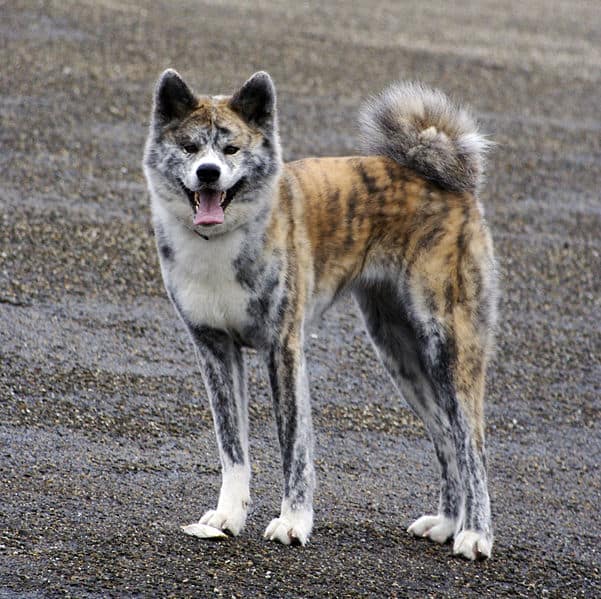
©Peter Theakston / Creative Commons
Male Akitas are between 100 and 130 pounds as adults. Females are a bit smaller, often between 70 and 100 pounds. Keep in mind that each dog is unique, so they can fall anywhere within that range. Ask about the puppy’s parents to get a better estimate of how big they will be when they’re fully grown.
Their weight can also be influenced by activity level and diet. Akitas were bred to protect and hunt, so they required enough exercise to keep their muscular frames strong and lean. While they aren’t very social with other dogs, they like activity and mental stimulation. Akitas are highly intelligent and fiercely protective. To keep them occupied and interested, go on adventures with your Akita that allow them to explore while still staying close to their humans.
The Biggest Akita Ever Recorded
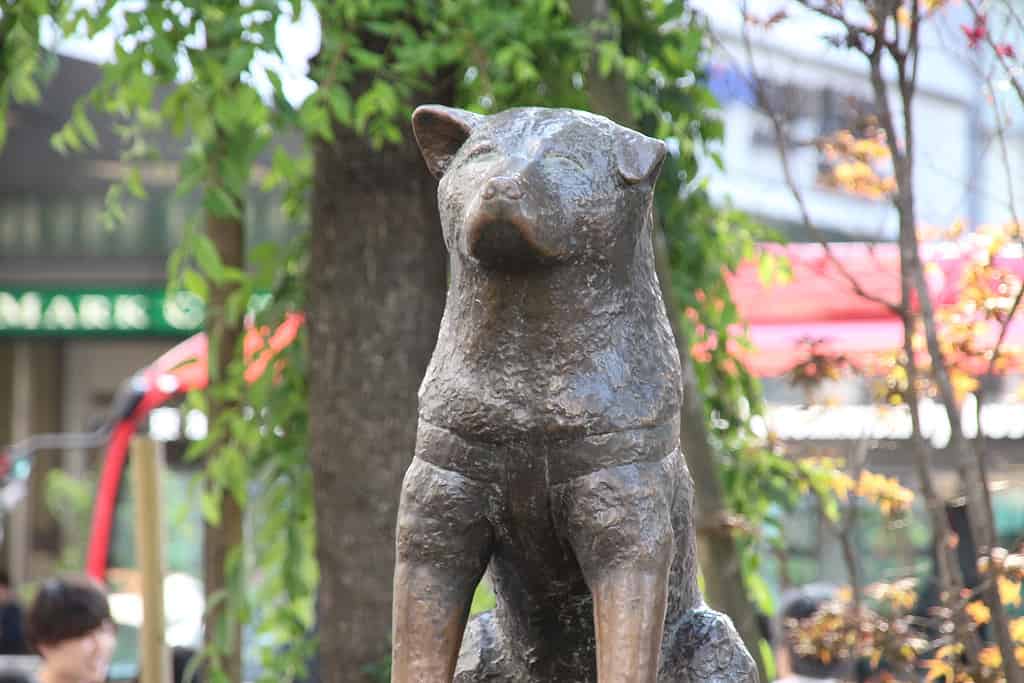
©Hyppolyte de Saint-Rambert/ CC BY-SA 4.0
Reports of male Akitas reaching 170 pounds make them the largest Akitas out there, but these can be hard to verify. One of the most famous Akitas is known for his loyalty rather than his size. Hachikō was a male Akita who lived with his owner, a professor, in Tokyo during the 1920s and 1930s. Even after his owner’s death in 1925, Hachikō waited for him at the train station where his owner would return from work at the end of the day. He did this until his death in 1935. Hachikō was buried next to his owner and is now a beloved symbol of loyalty in Japan. There are statues of Hachikō around the world and the train station where he diligently waited for his master to return commemorates his loyalty on a special recognition day each year.
When Should My Akita Be Spayed or Neutered?
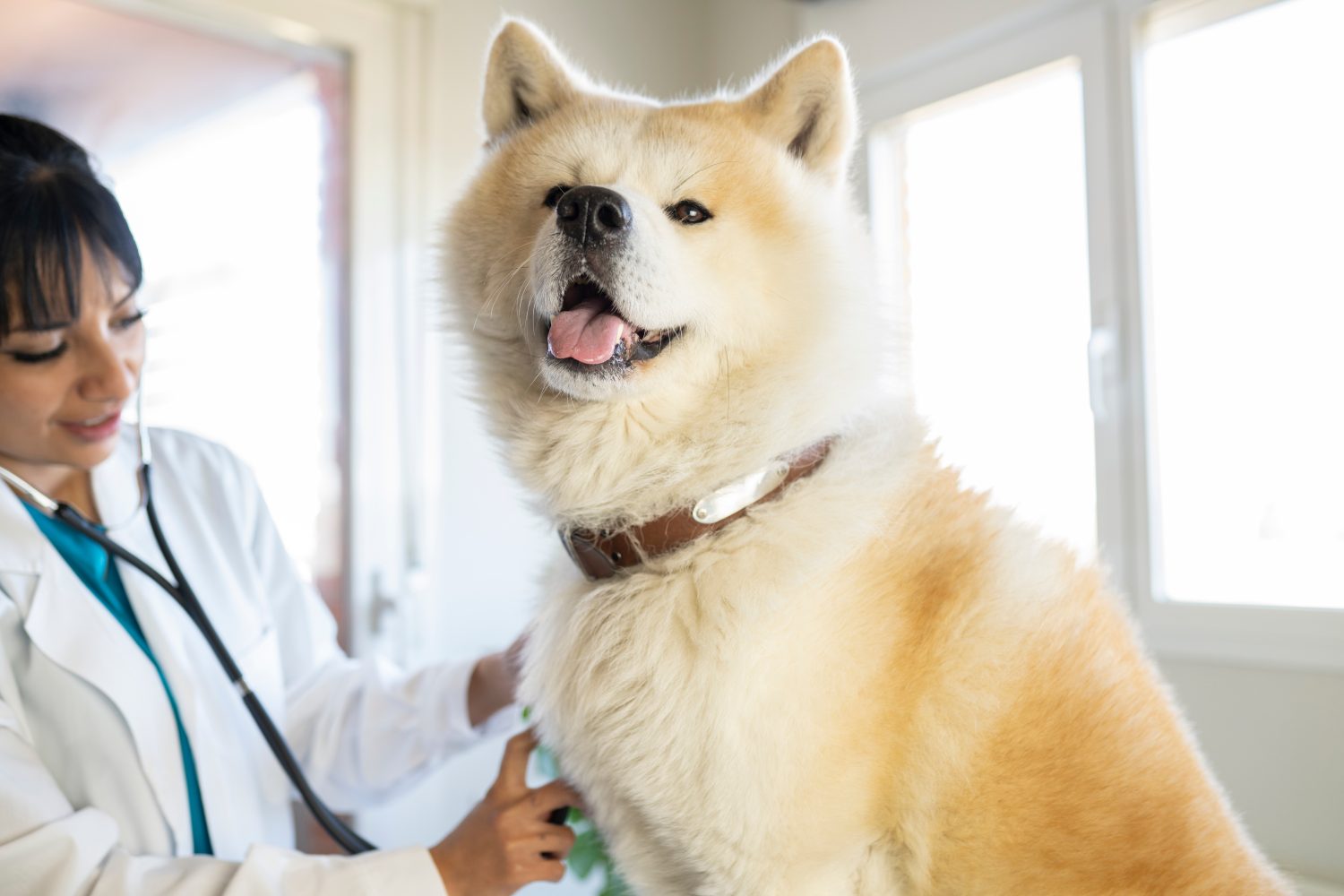
©PintoArt/Shutterstock.com
The American Kennel Club recommends waiting a bit longer, closer to 12 or 18 months, to neuter or spay a large breed dog. Akitas are large dogs, so it’s best to err on the side of neutering or spaying later. They are still puppies at this stage and won’t reach their full-grown weight and size until around 2 years old. Spaying and neutering impact your dog’s hormones, which can have an impact on their growth and development. This is why most vets recommend waiting at least 6 months for any dog. Of course, it’s always best to talk to your vet to find out what is best for your individual dog. Other health issues may require that you neuter or spay earlier or later.
Spaying and neutering are important because they reduce unplanned pregnancies and unplanned-for puppies. Unfortunately, shelters often can’t provide for the amount of dogs that are brought in. In these cases, they might need to euthanize dogs. It also makes life more comfortable for your dog, especially if you are not planning to breed it.
When Should My Akita Be House Broken?
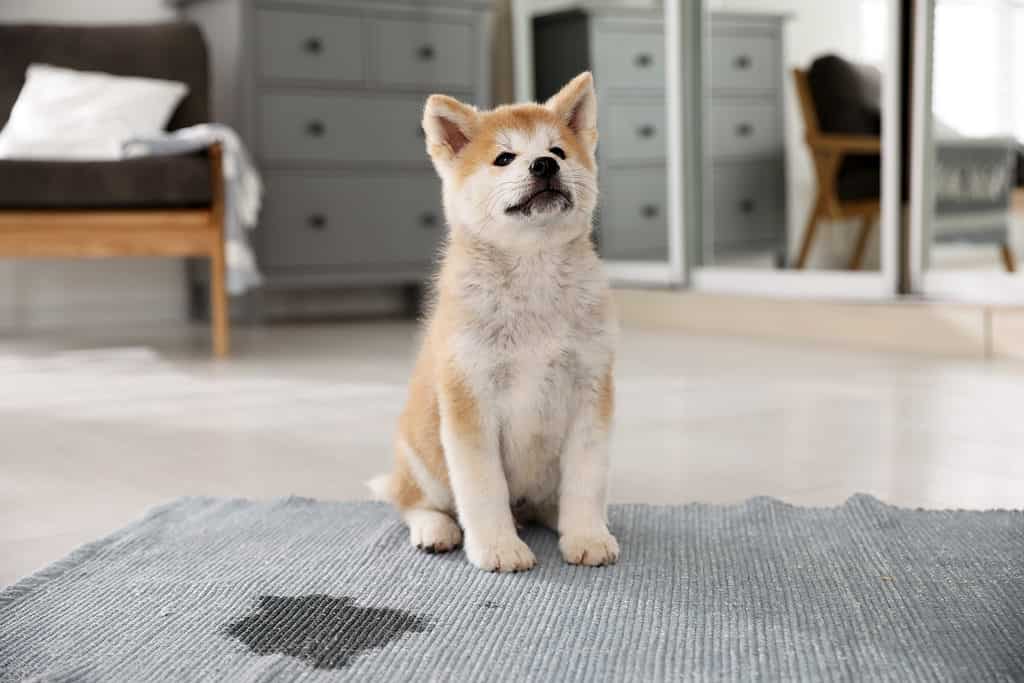
©New Africa/Shutterstock.com
One of the first things that you’ll need to tackle with a new Akita puppy is potty training. Fortunately, Akitas are highly intelligent dogs and train easily. You can start training your Akita puppy as early as 8 to 12 weeks old. Early potty training is often easier and smoother than waiting too long to introduce your puppy to the appropriate bathroom. The best tips for potty training an Akita are those that work for other breeds as well. Introduce them early, be consistent, learn and follow their cues, and provide a smaller place such as a crate and puppy pad for them to use as they learn.
When Should My Akita Stop Eating Puppy Food?
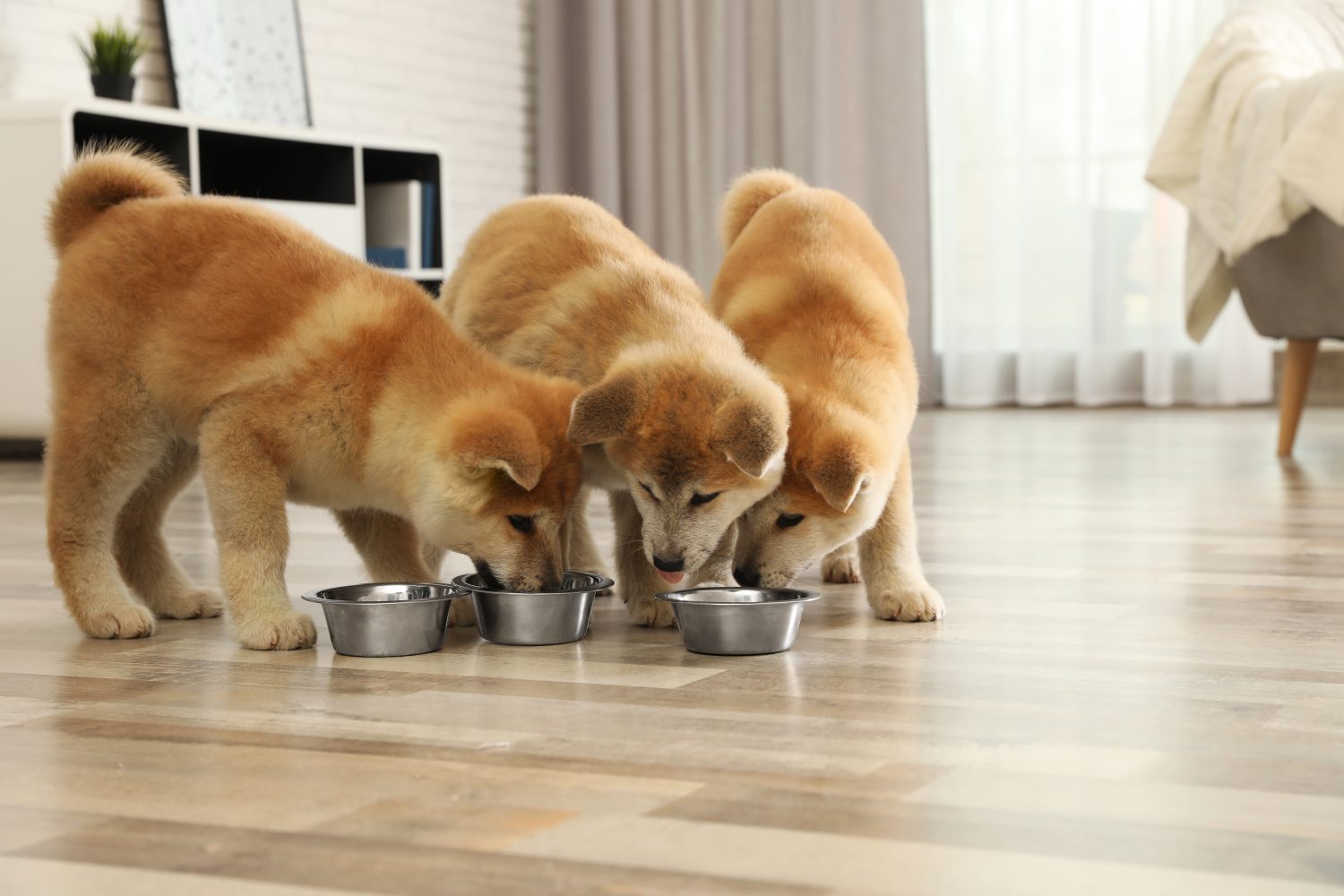
©New Africa/Shutterstock.com
Just like neutering and spaying, large breeds have different needs than small dogs when it comes to making the switch from puppy chow to adult food. You can wait as long as 14 months, possibly more, to go from puppy food to adult food. It depends on their growth pattern, which is one reason why a growth chart can be so helpful. As long as your Akita is meeting the expected growth milestones, switching them to adult food around 14 months is a good idea.
If your Akita is underweight, it might be helpful to keep them on the puppy formula a bit longer. Generally, puppy food has more calories, often from protein and fat. Puppy food also has more specialized nutrients to support growth. Adult dog food is formulated for dogs that have done most of their growing already and is a bit lower in calories per volume. As always, talk to your vet to get the best recommendations for your individual dog. They might also recommend a special formula to address other health needs or concerns.
When Will My Akita Start Losing Teeth?
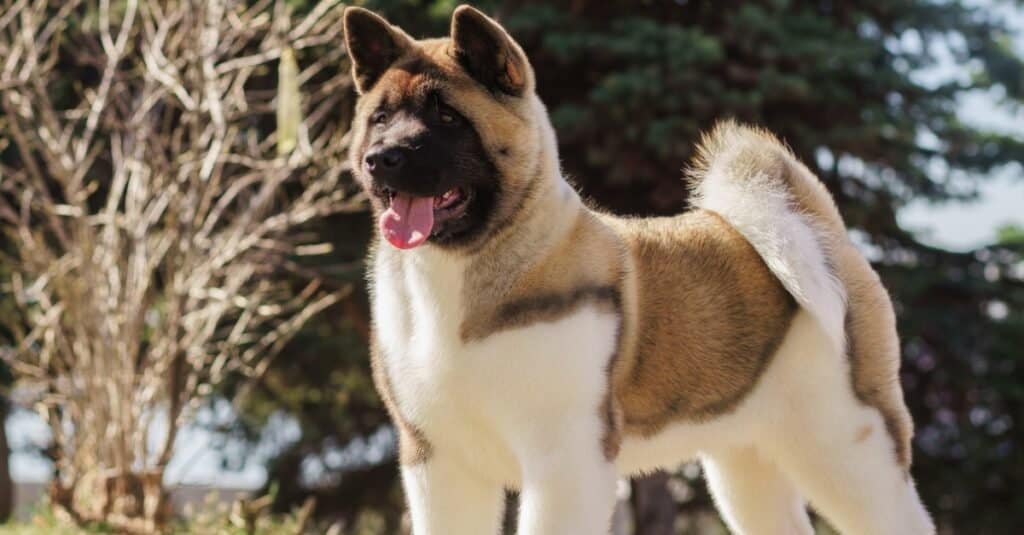
©iStock.com/Eduard_Mikrykov
Puppies have baby teeth, just like human babies and toddlers. They lose them and adult teeth come in. This usually happens around 6 months old. But just like with humans, it can take some time for the entire process to be complete. Don’t be surprised if your Akita puppy is losing and gaining teeth over a period of a few months. Give them plenty of puppy-safe chew toys to provide some relief. These are a bit more pliable than the adult chew toys to go easy on their tender mouths and gums.
When Should I Start Training My Akita?
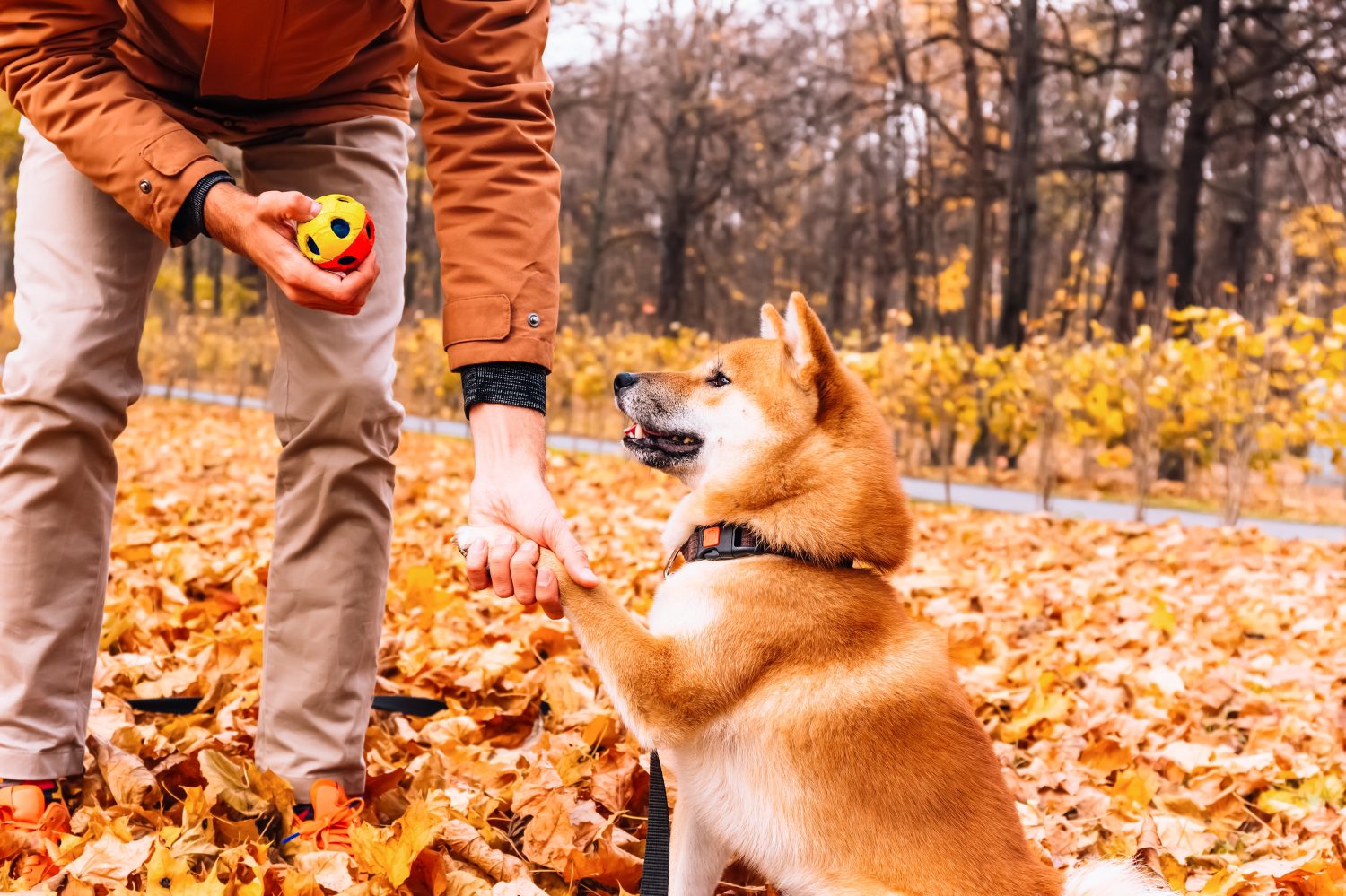
©Jannissimo/Shutterstock.com
It’s important to train and socialize your Akita early as a puppy. These dogs tend to keep to themselves and don’t like to spend time with other dogs. They can get aggressive if they perceive someone or another dog to be a threat to their family. Socializing them as puppies can keep them from getting aggressive, although they aren’t likely to be the center of the puppy or dog pack. Even well-socialized Akitas are aloof with other dogs and humans. They do love to spend time with and be affectionate with their human family, however.
What Commands Should I Teach My Akita First?
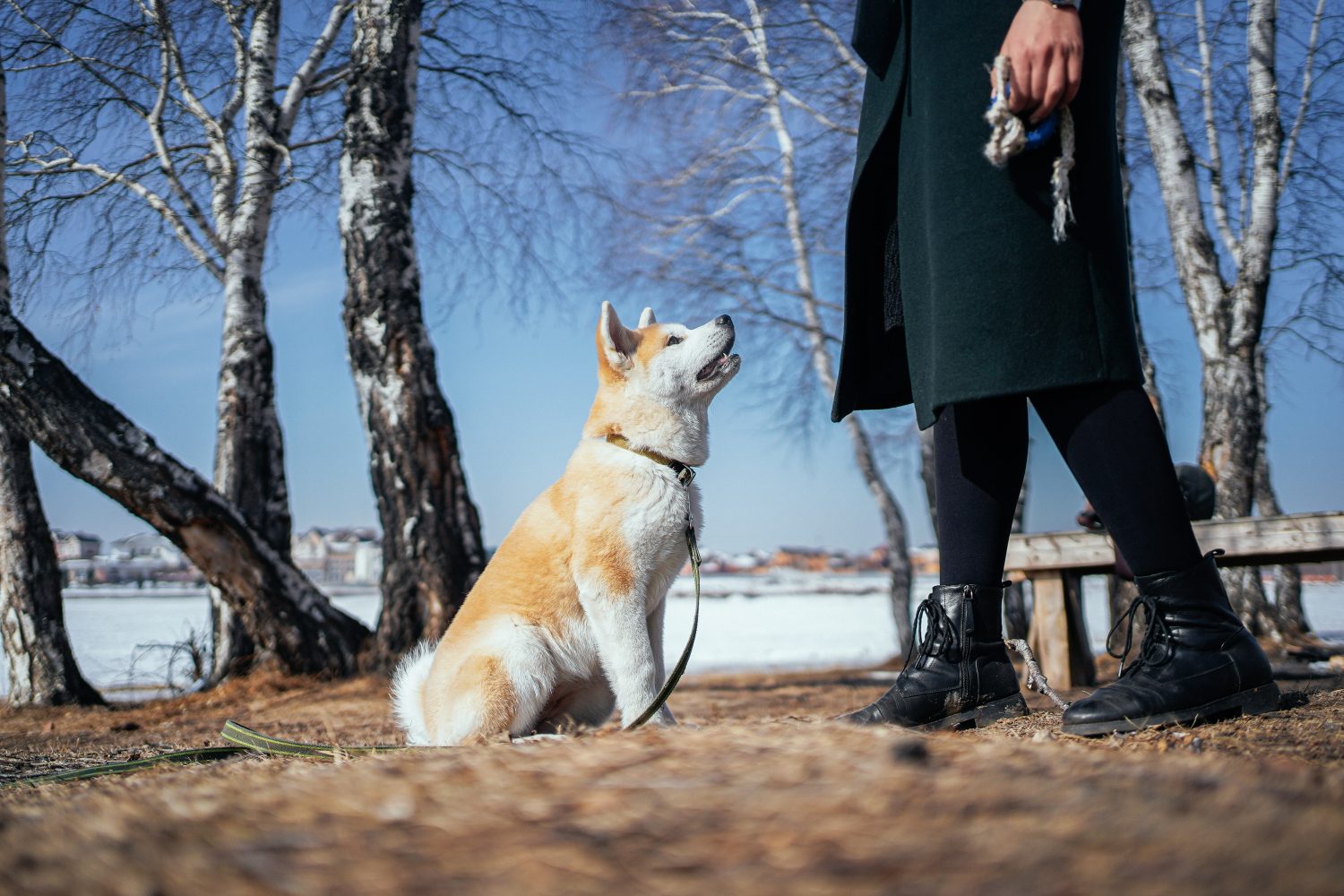
©Danila Shtantsov/Shutterstock.com
The best commands to start with when training your Akita are “sit” and “stay.” These are good for any dog but especially one that is so protective and loyal. “Come” is another great option because it allows your Akita to know and understand when you want them to be close by. “Down” can be helpful, especially for Akitas who may tend to get nervous or aggressive around other dogs or strangers.
Akitas are moderately easy to train because they are so eager to please. Reward them with plenty of positive reinforcement to make the process easy and smooth. Socializing them early is a very important part of training as well. While they may never be bounding up to other dogs out of happiness, they can learn to be comfortable around other dogs and people.
Pictures of Akitas as Puppies
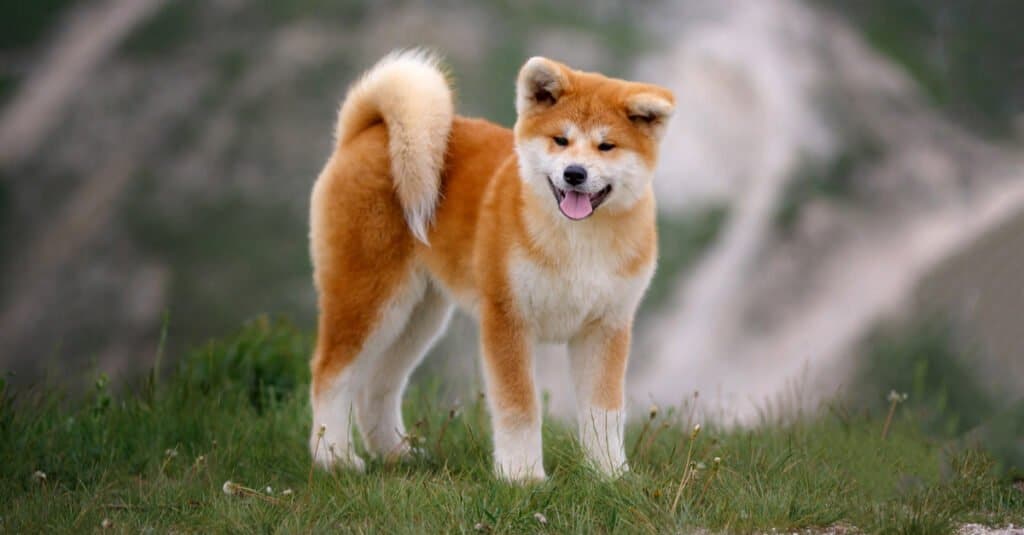
©Tatyana Kuznetsova/Shutterstock.com
Pictures of Akitas at 6 Months
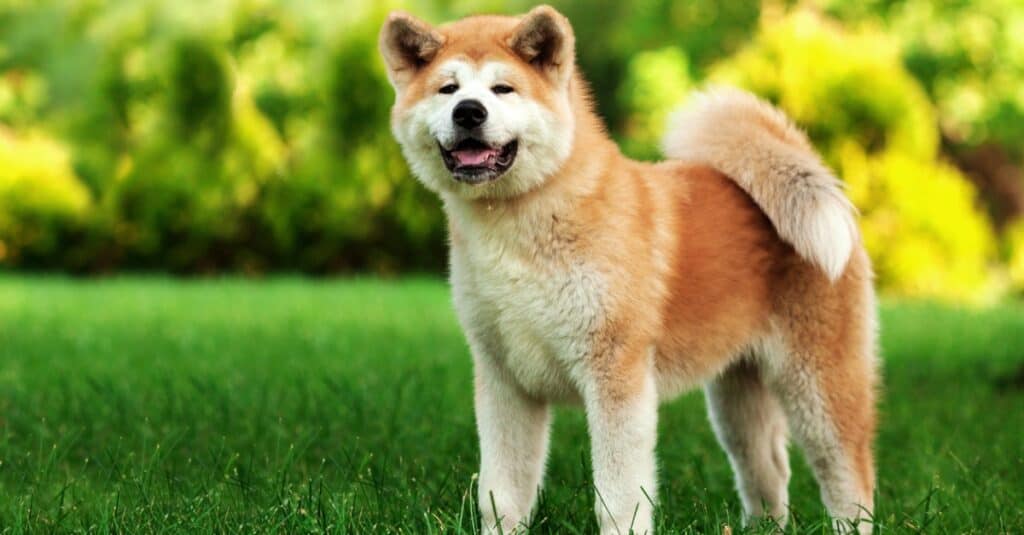
©TatyanaPanova/Shutterstock.com
Pictures of Fully Grown Akitas
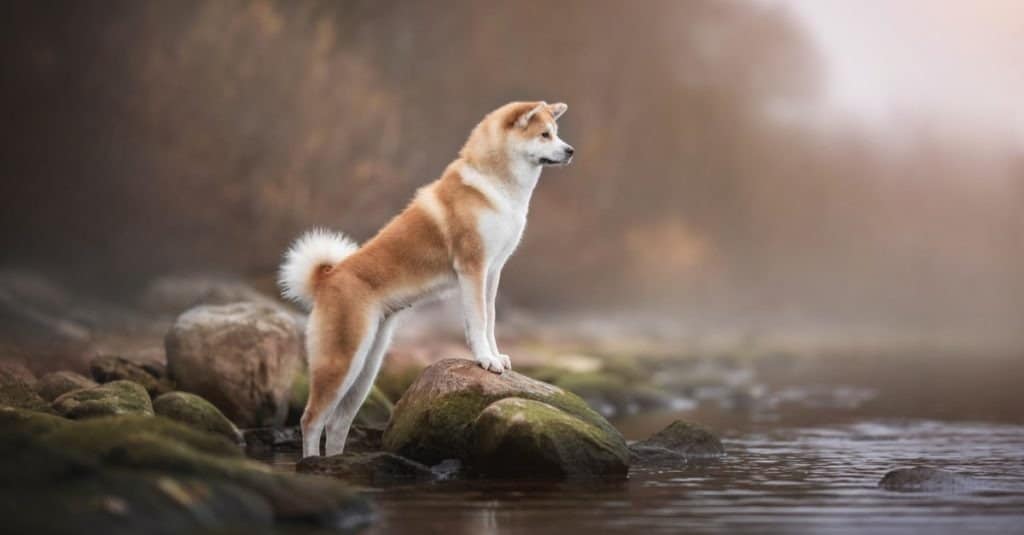
©Liudmila Bohush/Shutterstock.com
Other Dog Breeds Similar to Akitas
Shiba Inu
Siberian Husky
Rottweiler
The photo featured at the top of this post is © otsphoto/Shutterstock.com
